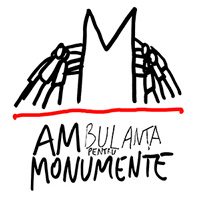The Monuments’ Ambulance is a project initiated in 2016 by the Monumentum Association and developed by a series of existent or newly created organizations active in the field of heritage which operate independently in several regions of Romania, as follows:
The MONUMENTUM Association – The Monuments’ Ambulance for South Transylvania
The Active Heritage Association – PACT – The Monuments’ Ambulance for Banat
The VERNACULAR Association – The Monuments’ Ambulance for Arad
The ARHAIC Association – The Monuments’ Ambulance for Sălaj
The ACTUM Association – The Monuments’ Ambulance for North Moldova
The aim of the project is to act efficiently for the preservation of the immovable heritage by safeguarding certain important heritage items that are in an advanced state of decay or pre-collapse. Over 600 historical monuments from Romania that are either public or private property are waiting for an emergency rescue and their number is increasing worryingly. The Monuments’ Ambulance project which ensures the safeguarding of the immovable cultural heritage with the help of volunteers, craftsmen and local communities under the strict supervision and guidance of conservation and historical monument restoration experts came as an answer to the lack of reaction from the communities, the related ministry and the authorities in front of the accelerated destruction threatening this heritage. Wherever the owner provides the necessary construction material, the Monuments’ Ambulance whose main supporter is HRH The Prince of Wales acts to safeguard the monument with the help of a van equipped with all the necessary tools.
The objectives of the Monuments’ Ambulance are:
– To get the communities involved in sustainable heritage safeguarding actions
– To safeguard the immovable heritage and keep a record of such heritage
– To increase the level of professional training of the experts through non-formal and informal participatory education based on the “hands on training system”
– To recover the traditional techniques and the local materials
– To increase the philanthropy level and create new audiences for such heritage.
Its most important achievements are: the creation of a cooperation model and financing mechanism between beneficiary, public authorities, NGOs and communities through a functional public-private partnership and the inauguration of a national network of ambulances managed by various organizations.
